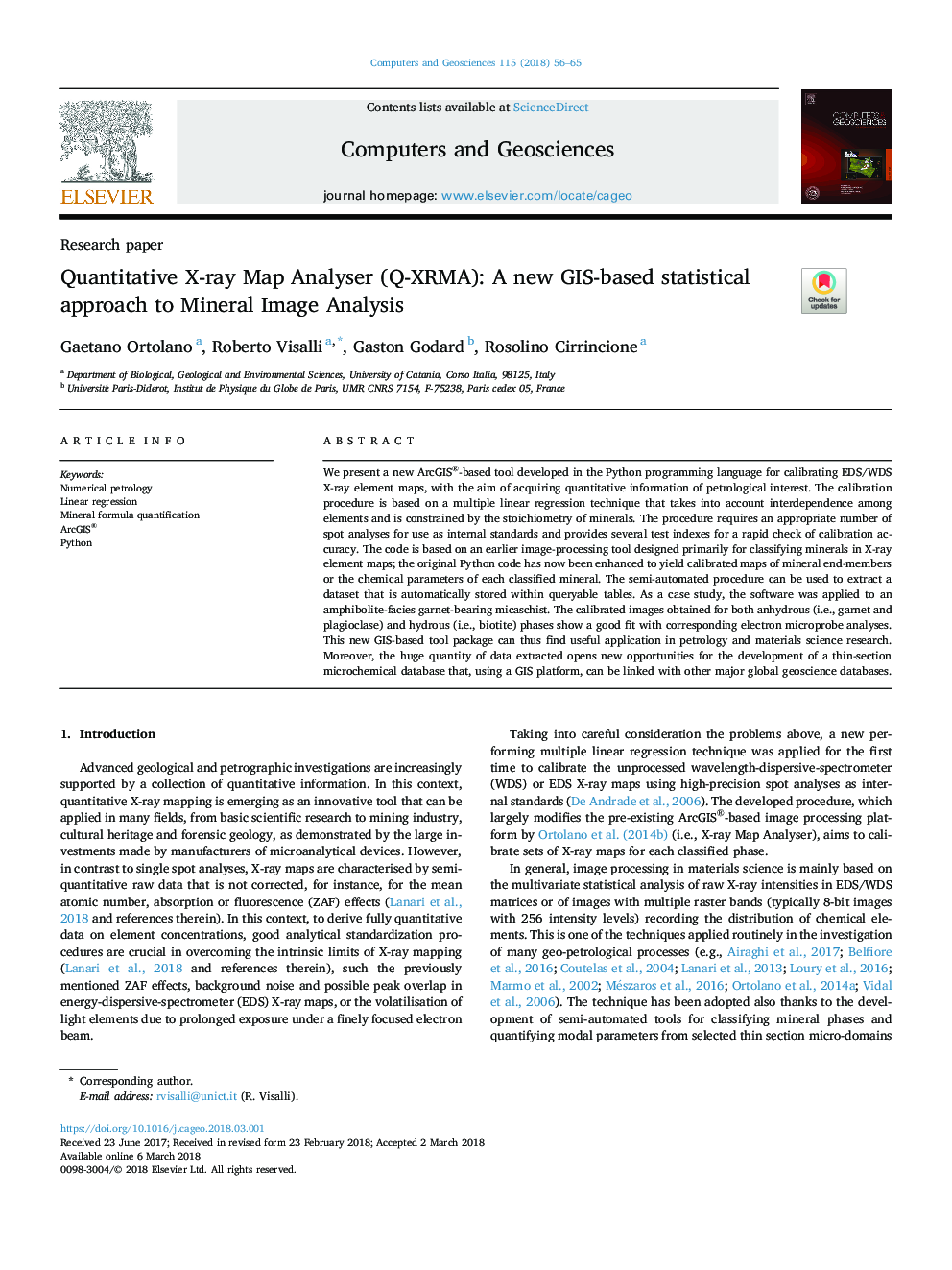| Article ID | Journal | Published Year | Pages | File Type |
|---|---|---|---|---|
| 6922127 | Computers & Geosciences | 2018 | 10 Pages |
Abstract
We present a new ArcGIS®-based tool developed in the Python programming language for calibrating EDS/WDS X-ray element maps, with the aim of acquiring quantitative information of petrological interest. The calibration procedure is based on a multiple linear regression technique that takes into account interdependence among elements and is constrained by the stoichiometry of minerals. The procedure requires an appropriate number of spot analyses for use as internal standards and provides several test indexes for a rapid check of calibration accuracy. The code is based on an earlier image-processing tool designed primarily for classifying minerals in X-ray element maps; the original Python code has now been enhanced to yield calibrated maps of mineral end-members or the chemical parameters of each classified mineral. The semi-automated procedure can be used to extract a dataset that is automatically stored within queryable tables. As a case study, the software was applied to an amphibolite-facies garnet-bearing micaschist. The calibrated images obtained for both anhydrous (i.e., garnet and plagioclase) and hydrous (i.e., biotite) phases show a good fit with corresponding electron microprobe analyses. This new GIS-based tool package can thus find useful application in petrology and materials science research. Moreover, the huge quantity of data extracted opens new opportunities for the development of a thin-section microchemical database that, using a GIS platform, can be linked with other major global geoscience databases.
Keywords
Related Topics
Physical Sciences and Engineering
Computer Science
Computer Science Applications
Authors
Gaetano Ortolano, Roberto Visalli, Gaston Godard, Rosolino Cirrincione,
